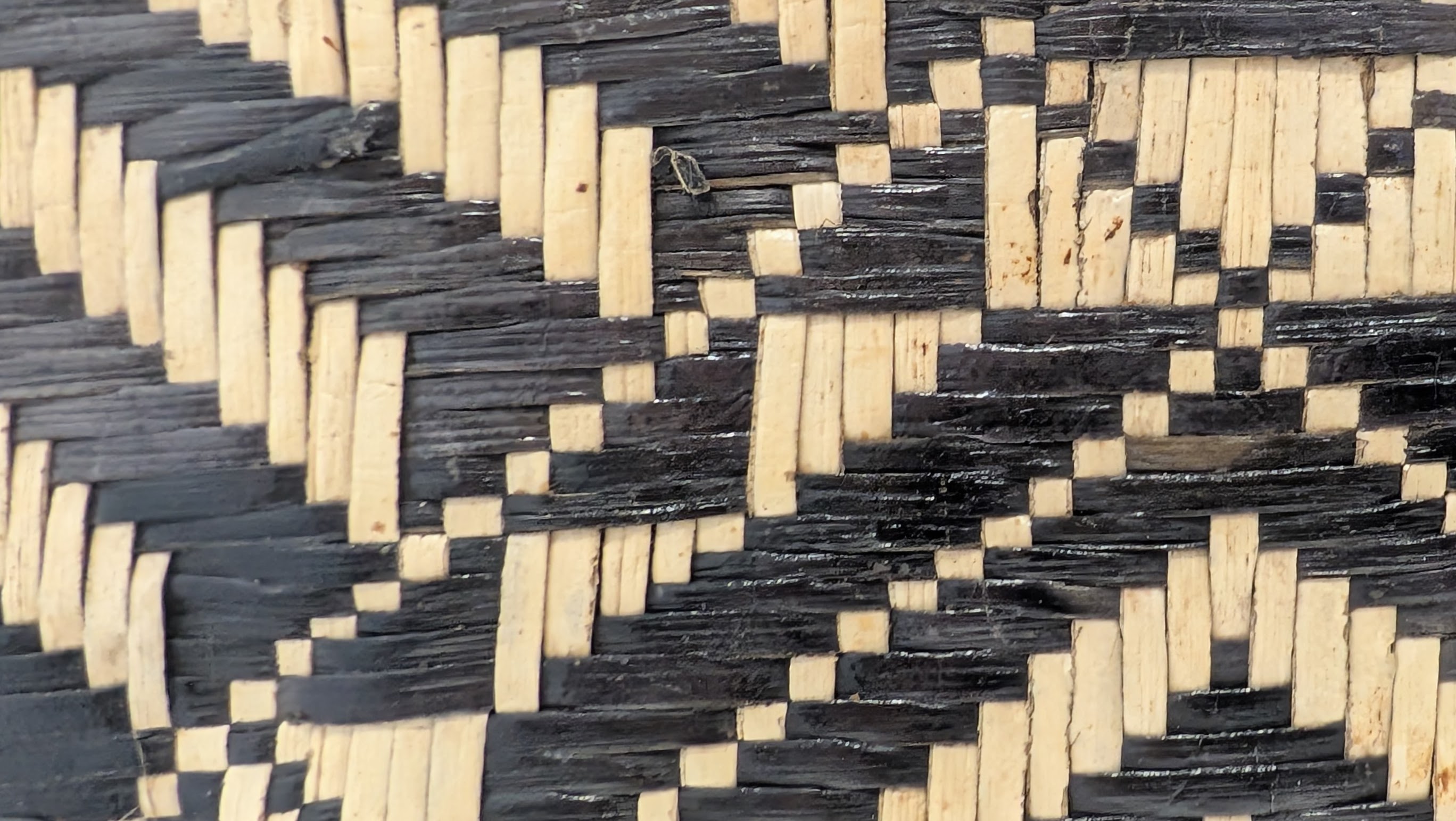
How do social patterns weave themselves together, and what happens when we pull on a loose thread? A detail of a pandanus basket from Normanby Island, Papua New Guinea.
- In files of author.
A network is a set of interconnected elements. In that general sense, it can be used to describe any number of social phenomena, from interactions among people to the chains of global trade among different nations. Social scientists often speak of societies as systems, which also can be defined as a set of interconnected elements. Yet to speak of a social system is to suggest that these interrelated parts are interdependent and that the system is a functionally integrated whole, like the gears in a clock or the organs of an animal’s body. Given this, the idea of a network as distinct from a system can be useful to identify other ways that various people and groups interact to produce social patterns. In this reading, a network is a set of interconnections that does not imply that all the elements form a single whole. A network is characterized by openness instead of closure.
Drawing largely on theories of communication, which often make use of an idea of a network that relays information from node to node, many theories in the social sciences have wanted develop their own theories of society based on networks instead of systems. When they do so they tend to emphasize not only a network’s openness, but its heterogeneity of elements, and its decentralized organization and distributedness. In this perspective networks don’t have to be defined to exclude the classical concept of systems. Important properties of networks are the interdependence and complementarity of the different parts that are tied to each other, which is also captured in functionalist theories of systems. Likewise, many networks have loops that feed outputs back into the network; they are recursive. Recursivity also can be said to be the basis by which functionally integrated systems achieve closure and stability. In that sense, classical concepts of social systems can be said to be a special case of a more general idea of networks.